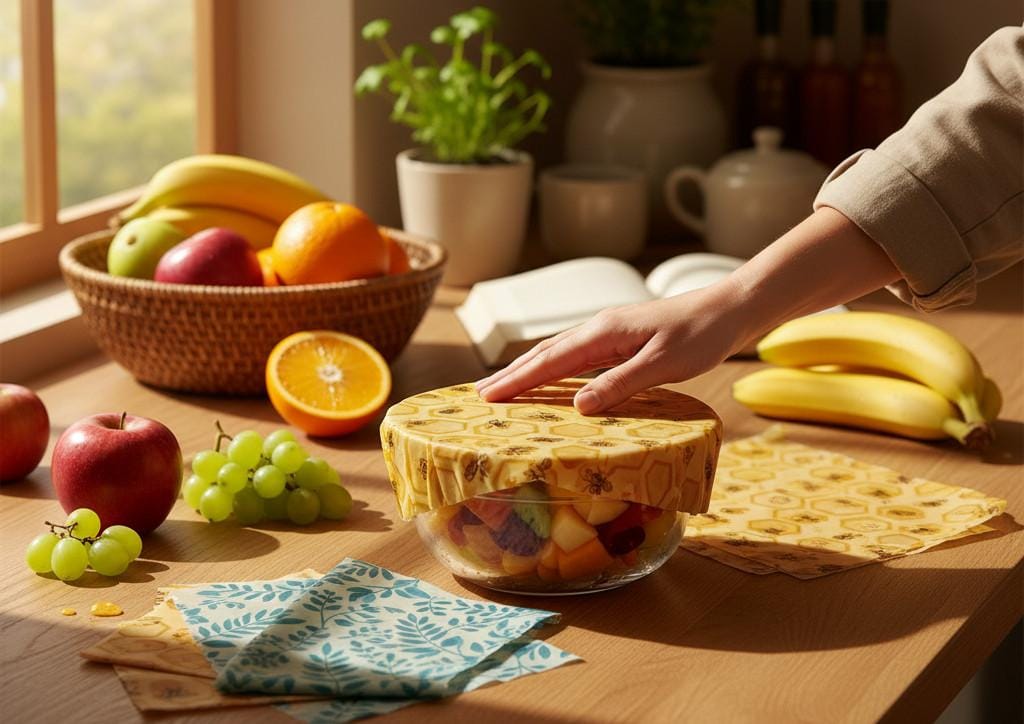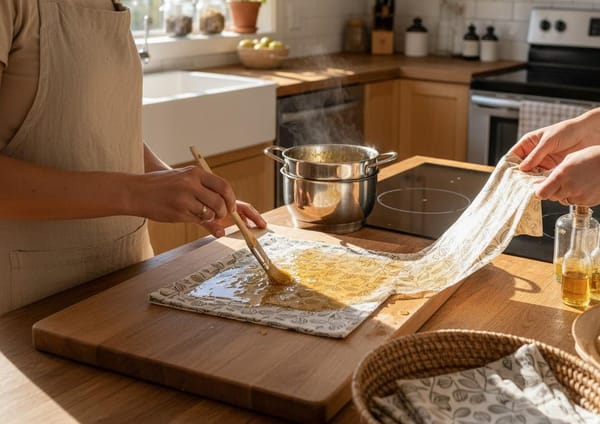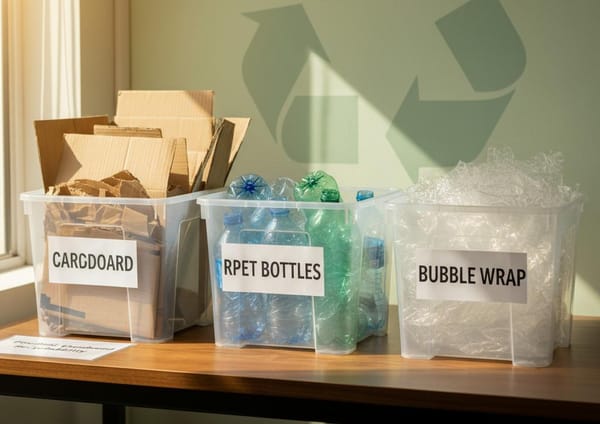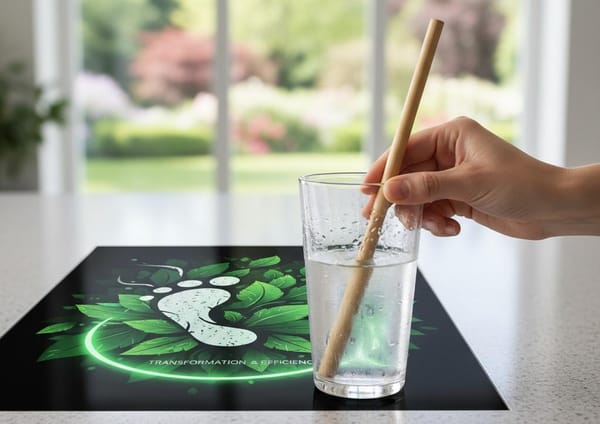Can a reusable beeswax wrap replace cling film?

Reusable Beeswax Wraps: An Overview
Reusable beeswax wrap is taking kitchens by storm as more people choose plastic-free alternatives. Along with staying flexible and attractive, these wraps reduce single-use waste and lock in freshness naturally. Because they are compostable and made from renewable materials, many households now prefer them over cling film.
Switching matters because plastic wrap adds to landfill and often ends up in oceans. Reusable wraps cut plastic use, lower your carbon footprint and save money over time. They also avoid harmful chemicals found in some plastics, which means safer food storage for families and pets.
In this guide you will find how to buy quality wraps, step-by-step DIY recipes and tips for custom designs. We also cover care instructions, common myths and answers to practical questions. Read on and discover simple swaps that protect food, save money and help the planet. By the end you'll know how to choose, make and care for reusable wraps easily.
The Benefits of Using Reusable Beeswax Wraps
Why choose a reusable beeswax wrap?
Switching to reusable beeswax wraps brings clear wins for people and planet. They fit an eco-friendly kitchen and work as practical plastic wrap alternatives. Below are the main benefits and simple examples that show why tens of thousands of households make the swap.
- Sustainability: Made from cotton, beeswax, jojoba oil and tree resin, wraps are compostable and renewable. Therefore, they avoid the long life of plastic in landfill. For more on comparative impacts, see this overview: Beeswax Food Wraps Overview.
- Breathability and freshness: Unlike sealed plastic, beeswax wraps let food breathe. As a result, cheese and cut fruit stay fresher and avoid sogginess. Use them to cover bowls or wrap sandwiches.
- Cost-effectiveness: You buy a few wraps and reuse them for months. Over time, they cost less than continually buying single-use cling film.
- Reduce plastic waste: By replacing cling film you cut plastic use at home. For tips on replacing plastic wrap, read Reusable Beeswax Wrap Guide. Moreover, less plastic helps keep oceans cleaner; learn more at NOAA Marine Debris.
- Health and safety: Beeswax wraps avoid many additives in plastics. Therefore, they lower chemical exposure when storing food.
- Versatility: Use wraps on fruit, glass jars and bowls. If you need how-to advice, see Beeswax Wrap Guide.
In short, reusable beeswax wraps support a zero waste lifestyle while staying practical. Read on to learn how to buy, make and care for them.
| Brand | Material composition | Sizes available | Price range | Unique features |
|---|---|---|---|---|
| Bee's Wrap | Organic cotton, beeswax, jojoba oil and tree resin | Small (7x8 in), Medium (10x11 in), Large (13x14 in) | $12–$30 per pack | Iconic brand, patterned prints, lasts 6–12 months, repairable; starter guide: Beeswax Wrap Guide |
| Abeego | Beeswax, tree resin and jojoba oil on treated fabric | Small and medium sheets, rounds | $10–$25 | Breathable design, different thickness options, good for cheese and produce |
| Etee | Organic cotton, beeswax, jojoba oil and tree resin | Small, Medium, Large sets | $10–$28 | Plastic-free packaging, bright patterns, ethical sourcing |
| Artisan handmade wraps | Cotton and natural wax blends (varies by maker) | Custom sizes | $6–$25 | Unique prints, local materials, often sold in markets, can be tailored to needs |
| DIY beeswax wraps | Your cotton plus beeswax, jojoba oil and resin or pine pitch | Any custom size | $2–$10 for materials | Most affordable, fully customizable, great zero waste project |
How to Use and Maintain Your Reusable Beeswax Wrap
Start simple and you will master beeswax wrap care quickly. Reusable beeswax wrap works best when you handle it gently and keep it cool. Below are clear steps for using, cleaning and storing your wraps, plus tips to extend their life.
Using your wrap
- Warm with your hands then mold around containers, bowls or cut fruit. The wax and resin hold shape with gentle pressure.
- Use medium or large sizes for bowl covers and small wraps for snacks and sandwiches.
- Avoid raw meat and fish on shared wraps. If you do, clean thoroughly or dedicate a single wrap for those items.
Cleaning and drying
- Rinse in cool or lukewarm water with mild dish soap. Hot water can melt the wax.
- Use a soft sponge. Do not scrub hard or put wraps in the dishwasher.
- Air dry flat or hang to dry. Ensure the wrap is fully dry before storing.
Storing and maintenance
- Fold or roll wraps and keep them in a dry drawer away from heat and direct sunlight.
- Refresh worn wraps by reapplying a thin layer of beeswax using an iron or oven method. This repair can restore tack and extend life.
Tips to extend lifespan
- Rotate wraps so no single piece wears out first. Keep them away from ovens and hot pans.
- For stubborn stains or odors, sprinkle baking soda, then wipe and rinse.
With routine reusable food wrap maintenance you can expect months of use. Care well and they will reward you with longer life and fewer single-use plastics.
CONCLUSION
Reusable beeswax wrap offers a simple, effective way to cut plastic and refresh your kitchen habits. More people choose them because they are compostable, made from natural fibers and help keep food fresh without chemicals. Therefore, choosing beeswax wraps supports an eco-friendly kitchen and a zero waste lifestyle.
The main benefits are clear: reduced plastic waste, breathable storage that keeps produce and cheese fresher, and cost savings over time. Also, with basic beeswax wrap care you can repair and reuse wraps for months. Small steps like switching from cling film to a reusable food wrap add up to large reductions in household plastic.
If you want to start, try a mix of sizes and follow simple cleaning rules. Over time you may even make your own wraps or choose custom designs. In short, reusable beeswax wrap is practical, affordable and kind to the planet.
Make the switch today. Each small change helps protect oceans and reduce landfill. Together, these actions lead to big environmental benefits for future generations.
Frequently Asked Questions (FAQs)
What is a reusable beeswax wrap and how does it work?
How long do beeswax wraps last?
Are beeswax wraps safe for all foods, including raw meat?
How do I clean and store reusable beeswax wraps?
Can reusable beeswax wraps replace plastic wrap completely?
If you want to get started, simple swaps plus regular beeswax wrap care and reusable food wrap maintenance will make the change easy and effective.



